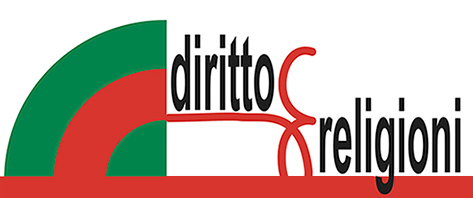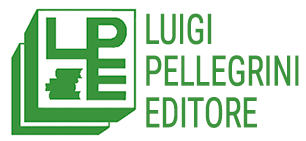What escapes the laws of scientific predictability is always a source of curiosity, sometimes accompanied by skepticism, sometimes by fear, sometimes by the sense of amazement at the unknown that manifests itself.
Supernaturalness and religiosity are inseparably linked: it is no coincidence that the sense of the sacred is one of the first testimonies of the cultural transformation of a people, as well as one of the main stages of anthropological development[1].
In a society that has "liquefied" the institutional constraints of religion and is increasingly attracted by momentary and unstructured "experiences" of contact with the divine, the growth of interest in the preternatural, sometimes mistakenly presented as supernatural[2], is an undeniable fact.
In Catholicism, a clarification is necessary: not everything that is preternatural is supernatural. Borrowing a classic distinction from Thomistic theology, preternatural is defined as everything that goes beyond the order of nature, but is the work of creaturely beings, without any kind of positive or negative characterization, while the supernatural is that which can be traced back to the action of God. From this classification derives the grave obligation of the pastors of the Church to be vigilant so that, behind paranormal phenomena, there are no sinister operations of deception and deception to the detriment of vulnerable subjects, or always remaining in the spiritual sphere, extraordinary activity of the evil one[3].
In order to guide pastoral action, the Doctrinal Section of the Dicastery for the Doctrine of the Faith, appointed by the Ap. Praedicate Evangelium to "offer a response, in the light of faith, to the questions and arguments that emerge with the progress of the sciences and the evolution of civilizations,"[4] last May 17 issued the new Norms for Proceeding in the Discernment of Presumed Supernatural Phenomena[5], which update the provisions issued in 1978 under the pontificate of Paul VI, made public in May 2012 with an explanatory note[6].
The document now approved opens with a long exposition of the inspiring principles of the reform, which is aimed at streamlining the procedures for the recognition and promotion of (possible) spiritual fruits that originate from presumed supernatural realities, without, however, reaching formal declarations on their divine origin.
On the one hand, the Dicastery notes that in recent years there have been episodes in which the faithful have not received adequate and prompt answers regarding the conformity of certain events with the faith, with consequent bewilderment and doubt; at other times, hasty decisions of the local bishops have clashed with a prudent attitude on the part of the Holy See; Certain formulations on the certainty of the supernatural origin of the fact would seem to bind in conscience, in ways that would lead the less experienced to mistakenly recognize definitive declarations, proper to the solemn magisterium or to the ordinary universal magisterium[7].
The solution identified is to no longer issue declarations de supernaturalitate, but to prefer pastoral evaluations of the advisability of allowing adherence to the presumed manifestation of the divine and the sharing of spiritual fruits among the faithful. Obviously, the pontifical power to approve a devotion as surely coming from God remains firm.
The six possible pronouncements, listed in section B of the Norms (§§16-23), range from Nihil obstat, understood as the highest degree of adhesion that can be granted, linked to the observation of positive signs of the action of the Holy Spirit and the absence of risks to faith or morals, to the Declaratio de non supernaturalitate, which occurs when the moral certainty of the absence of any spiritual influence in the phenomenon under investigation is reached. In between, there are other considerations, which postulate an activity of accompaniment to support the beneficial aspects of the devotion that is spreading or to correct and eliminate critical issues, which may be linked to the charism itself or to those who manifest it[8].
This is a very wide range of instruments offered to the competent diocesan Bishop: in some ways, it could even be excessive, to the extent that there are overlaps not on the conceptual level, but on the applicative one. By way of example, a Prohibetur et obstruatur, which is the penultimate degree on the scale of decreasing tolerability, will hardly fail to postulate a declaration of non-supernaturality. And it is significant that the Dicastery, in clarifying when a Prohibetur et obstruatur can be issued, speaks of "legitimate requests and some positive elements" and not of "spiritual fruits": the gravity of the scandal that emerges is such that, perhaps, it would be better to completely exclude any even remote semblance of intervention "from on high."
On the procedural level, the idea is that of partial subsidiarity on the level of investigation – it is the diocesan Bishop who examines the cases and formulates the judgment, which will be submitted to the attention of the Dicastery for the Doctrine of the Faith, which will confirm or request a supplementary investigation[9] – and disciplinary – in fact, the duty of the pastor of the local Church to watch over and provide for the devotion that originates [10]from the phenomenon. The Holy See reserves powers of control, coordination, impetus and revision over the entire procedure.
If the case concerns more than one ecclesiastical circumscription, an interdiocesan commission may be set up, presided over by one of the Bishops concerned[11], which, according to the literal tenor of the Norms, will enjoy the powers of inquiry, but not the disciplinary powers, proper to the diocesan pastor alone.
In continuity with section II, §4, of the Norme of 1978, article 7 §2 of the current regulations maintains the path of watchful waiting, which can be followed when "the phenomena are easily manageable" at the local level and no risk to the community is perceived.
In this hypothesis, I imagine, fall all situations of very limited entity, in which there is little crowd participation and minimal involvement of the media, an eventuality that, in today's society, becomes residual.
More likely, the ecclesiastical authority will have to act as a result of solicitations coming from the People of God, edified on the devotional level or scandalized by the commercialization of sacred things.
In any case, after a preliminary collection of elements of evaluation and careful custody of any objects involved in the phenomenon, the bishop will establish, in agreement with the Dicastery, a Commission, made up of at least one theologian, one canonist and one expert chosen according to the competence required to investigate the event.
The clarification on the presence of a canonist[12], which was not required in the previous regulations, is to be welcomed: it denotes, on the one hand, greater attention on the part of the Dicastery to the juridical correctness of the procedure, and on the other, it is a sign that every charism and every supernatural event cannot disregard a communitarian sensus Ecclesiae, which finds a clear manifestation in canon law[13].
With regard to interrogations, the canons on the examination of witnesses in the ordinary contentious process are expressly recalled (for the Latin Church, canons 1558-1571 C.I.C.) and the norms on the absolute inviolability of the sacramental seal that weighs on confessors and on the more attenuated bond of confidentiality on the part of spiritual directors are reaffirmed. Only the latter will be able to testify, with the written authorization of the faithful they lead[14].
The perspective of collaboration is vigorously supported: not only is the support of experts in the disciplines provided who can be of help in determining the truthfulness (or rather, given the non-final nature of the ruling) of the verisimilitude of the inexplicable origin of the fact, but also the support of the civil authority is trusted, should conflicts with public order occur[15].
The criteria for judging are the same as in the previous discipline, although the standard of certainty is lower, since no declarations de supernaturalitate will be made. In particular, art. 14 enumerates among the positive elements the credibility of the persons involved, doctrinal orthodoxy, the unpredictability of the phenomenon, the fruits of Christian life; On the other hand, article 15 points out critical issues, i.e. errors in the act, departure from the right faith, sectarianism, serious immorality, psychic alterations of the subjects involved, the search for purely earthly benefits (money, fame, power).
At the end of the investigation, which will cumulatively take into account the criteria indicated above, the bishop will formulate a proposal for a decision, which will be transmitted to the Dicastery for the Doctrine of the Faith: even if the final decision rests with the Holy See, the final act is attributed to the local Ordinary, in order to avoid confusion among the faithful and always allow room for revision of the judgment[16].
Not only that, even in the face of the Nihil obstat, attention will be kept high, with the aim of preserving the "spiritual fruits" of the phenomenon prudently welcomed but, it is reiterated, not approved[17].
In cases of open mystification, deception of the weakest faithful, or abuse, the canonical penal norms most suitable to guarantee the good of souls will be applied[18].
Andrea Miccichè
[1] See the pivotal work on the subject, R. Otto, Il sacro. L’irrazionale nell’idea del divino e la sua relazione al razionale, Feltrinelli, Milano, 1966 (1st ed. in German in 1917), pp. 22-40. Cf. also J. Reis, Il senso del sacro nelle culture e nelle religioni, Jaca Book, Milano, 2006, pp. 19-21.
[2] Cf. Thomas Aquinas, Summa contra Gentiles, III, 100-107, in which the Doctor Angelicus distinguishes the work of God from that of the creatures, good or evil, subject to him.
[3] Cf. Catechism of the Catholic Church, nos. 394-395, 1673.
[4] Article 71 Praedicate Evangelium.
[5]Please refer to https://www.vatican.va/roman_curia/congregations/cfaith/documents/rc_ddf_doc_20240517_norme-fenomeni-soprannaturali_it.html.
[6] Cf. Congregation for the Doctrine of the Faith, Normae de modo procedendi in diudicandis praesumptis apparitionibus ac revelationibus, AAS 104 (2012) 497-504.
[7] On this question, cf. canons 747-755, as well as Congregation for the Doctrine of the Faith, Professio fidei et iusiurandum fidelitatis in suscipiendo officio nomine Ecclesiae exercendo una nota doctrinali adnexa, AAS 90 (1998) 542-551.
[8] The specification of the harmfulness of the person who is the recipient of a presumed charism is clear with regard to the Sub mandato outcome, which occurs when "a spiritual experience is used for a particular and undue economic advantage, committing immoral acts or carrying out a pastoral activity parallel to that already present in the ecclesiastical territory" (§20).
[9] Article 1 Norms.
[10] Article 3 Norms.
[11] Articles 4-6 Norms.
[12] Article 8 §1 Norms.
[13] Cf. Benedict XVI, Address to participants in the study conference organized by the Pontifical Council for Legislative Texts on the occasion of the 25th anniversary of the promulgation of the Code of Canon Law, 25 January 2008, https://www.vatican.va/content/benedict-xvi/it/speeches/2008/january/documents/hf_ben-xvi_spe_20080125_testi-legislativi.html; Francis, Address to participants in the training course for legal practitioners, promoted by the Tribunal of the Roman Rota, 18th February 2023, https://www.vatican.va/content/francesco/it/speeches/2023/february/documents/20230218-operatori-didiritto.html; G. Ghirlanda, Il diritto della Chiesa mistero di comunione, Edizioni San Paolo-Editrice Pontificia Università Gregoriana, Cinisello Balsamo-Roma, 1990, pp. 53-58.
[14] Article 9 Norms.
[15] Article 11 Norms.
[16] Articles 18-21 Norms.
[17] Article 22 and 24 Norms.
[18] Articles 23 and 25 of the Rules.


